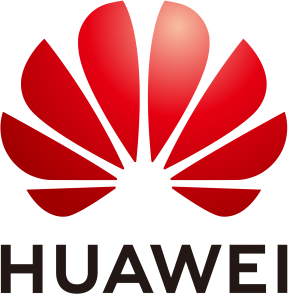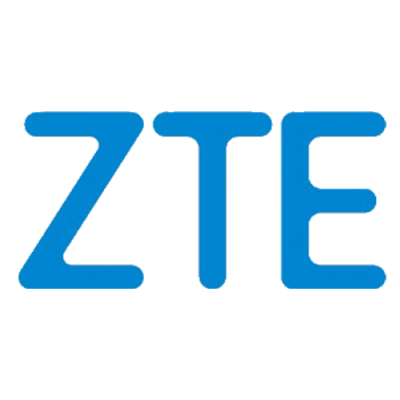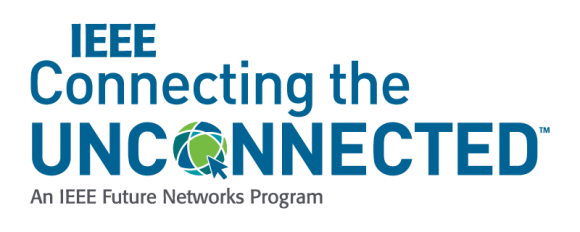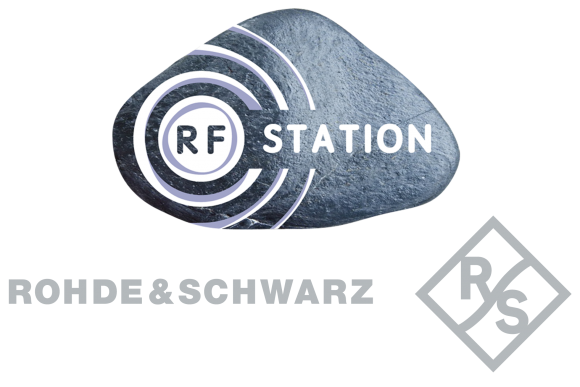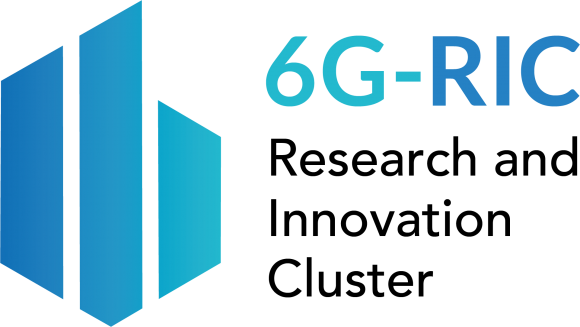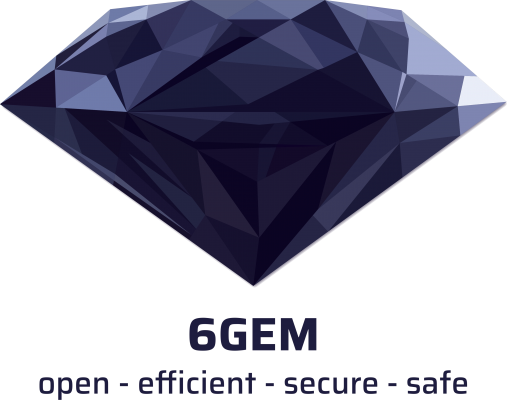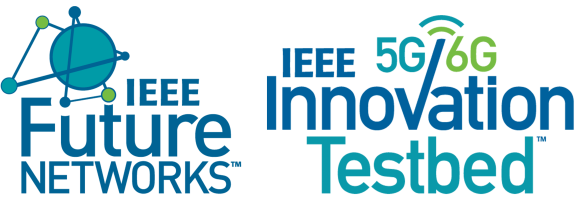The 2023 IEEE GLOBECOM continues to provide an extensive platform for researchers and industry professionals, featuring exceptional keynote speakers set to inspire with their profound insights and expertise.
*All times are MALAYSIA (GMT+8)
LIST OF KEYNOTES:
- Keynote 1: Peiying Zhu, Huawei
- Keynote 2: Mathias Fink, ESPCI Paris
- Keynote 3: Mérouane Debbah, TII
- Keynote 4: Muriel Médard, MIT
- Keynote 5: Ed Tiedemann, Qualcomm
- Keynote 6: Harald Haas, University of Strathclyde/Glasgow
- Keynote 7: Li Tian, ZTE
TUESDAY, DEC 5, 10:30 - 12:30 / LOCATION: HALL 8(A,B)
KEYNOTE 1: PEIYING ZHU
Title: Unleash 6G’s Beyond Connectivity Capability with Integrated AI, Sensing, and Communication
Abstract: Integrated AI, Sensing and Communications are two key usage scenarios that distinguish 6G from previous generations of connectivity-centric wireless systems. These new usage scenarios enable 6G to go beyond communication. The recently completed ITU-R 6G framework has endorsed this vision, demonstrating the industry’s consensus towards this direction. There are many different interpretations of integrated AI and communication, including Native AI, AI for communication, AI for Network, Communication for AI, Network for AI, etc. With the rise of Generative AI or Large Model Based AI, this topic is becoming even more intriguing. In this talk, we will try to discuss the key essence of this new beyond communication capability of 6G, focusing on the benefits, challenges, technologies and roadmap to enable them from a standard perspective. We will present some recent experimental results to demonstrate the feasibility of these concepts.
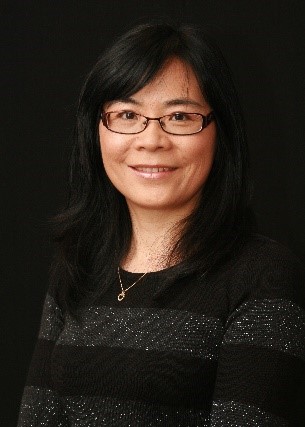 Bio: Peiying Zhu, Senior Vice President of Wireless Research, is a Huawei Fellow, IEEE Fellow and Fellow of Canadian Academy of Engineering. She is currently leading 6G wireless research and standardization in Huawei. The focus of her research is advanced radio access technologies. She is actively involved in 3GPP and IEEE 802 standards development. She has been regularly giving talks and panel discussions on 5G/6G vision and enabling technologies. She led the team to contribute significantly to 5G technologies and standardization. Many technologies developed by the team have been adopted into 5G standards and implemented in 5G products. She served as the guest editor for IEEE Signal processing magazine special issue on the 5G revolution and IEEE JSAC on Deployment Issues and Performance Challenges for 5G.
Bio: Peiying Zhu, Senior Vice President of Wireless Research, is a Huawei Fellow, IEEE Fellow and Fellow of Canadian Academy of Engineering. She is currently leading 6G wireless research and standardization in Huawei. The focus of her research is advanced radio access technologies. She is actively involved in 3GPP and IEEE 802 standards development. She has been regularly giving talks and panel discussions on 5G/6G vision and enabling technologies. She led the team to contribute significantly to 5G technologies and standardization. Many technologies developed by the team have been adopted into 5G standards and implemented in 5G products. She served as the guest editor for IEEE Signal processing magazine special issue on the 5G revolution and IEEE JSAC on Deployment Issues and Performance Challenges for 5G.
Prior to joining Huawei in 2009, Peiying was a Nortel Fellow and Director of Advanced Wireless Access Technology in the Nortel Wireless Technology Lab. She led the team and pioneered research and prototyping on MIMO-OFDM and Multi-hop relay, which were adopted into LTE standards and 4G products. Dr. Zhu has more than 200 granted patents.
KEYNOTE 2: MATHIAS FINK
Title: How to Design Reconfigurable Intelligent Surfaces for Ultrawideband Wireless Communications? From Acoustics to Electromagnetism
Abstract: Reconfigurable intelligent surfaces (RIS) are currently a topic of great interest in the wireless communication community, and are proposed as a new paradigm for the sixth generation (6G) of communications networks. The same concept is also under development for multi-user sound communications in reverberating environment as acoustic reconfigurable intelligent surfaces (ARIS), However, when dealing with audible acoustic waves, the problem is more complex that for classical narrowband RIS, as the reconfigurable surface needs to cover a wide range of frequencies spanning several decades. Consequently, each element of the RIS needs to have a complex transient response to optimize its performance across each spectral range. To address this challenge, we have developed feedback metasurfaces where each elementary cell works as a reconfigurable spatio-temporal filter. By appropriately configuring the spatio-temporal filters of the metasurface, one can establish acoustic communication between groups of individuals immersed in a noisy environment, effectively creating a multi-user multiple-input multiple-output (MU-MIMO) acoustic system. This research opens the field of ultrawideband RIS communications systems.
 Bio: Mathias Fink is the George Charpak Professor at the Ecole Superieure de Physique et de Chimie Industrielles de la Ville de Paris (ESPCI Paris), where he founded the Langevin Institute. He is a member of the French Academy of Science and of the National Academy of Technologies of France. In 2008, he was elected at the College de France on the Chair of Technological Innovation.
Bio: Mathias Fink is the George Charpak Professor at the Ecole Superieure de Physique et de Chimie Industrielles de la Ville de Paris (ESPCI Paris), where he founded the Langevin Institute. He is a member of the French Academy of Science and of the National Academy of Technologies of France. In 2008, he was elected at the College de France on the Chair of Technological Innovation.
Mathias Fink’s area of research is concerned with the propagation of waves in complex media. His current research interests include wave control in complex media, time-reversal in physics, metamaterials, telecommunications, super-resolution, medical ultrasonic imaging, multiwave imaging. With his colleagues, he pioneered different inventions in the field of telecommunications (Time-reversal processing and Reconfigurable intelligent surfaces) and in medical imaging (ultrafast ultrasonic imaging, transient elastography, shear wave Elastography, supersonic shear imaging). 7 start-up companies with more than 400 employees have been created from his research (Echosens, Sensitive Object, Supersonic Imagine, Time Reversal Communications, CardiaWave, Austral DX, and GreenerWave).
WEDNESDAY, DEC 6, 10:30 - 12:30 / LOCATION: HALL 8(A,B)
KEYNOTE 3: MÉROUANE DEBBAH
Title: TelecomGPT: Next-Generation Generative AI Telecom Network
Abstract: The evolution of generative artificial intelligence (GenAI) constitutes a turning point in reshaping the future of technology in different aspects. Wireless networks in particular, with the blooming of self-evolving networks, represent a rich field for exploiting GenAI and reaping several benefits that can fundamentally change the way how wireless networks are designed and operated nowadays. To be specific, large language models (LLMs), a subfield of GenAI, are envisioned to open up a new era of autonomous wireless networks, in which a multimodal large model trained over various Telecom data, can be fine-tuned to perform several downstream tasks, eliminating the need for dedicated AI models for each task and paving the way for the realization of artificial general intelligence (AGI)-empowered wireless networks. In this talk, we aim to unfold the opportunities that can be reaped from integrating LLMs into the Telecom domain. In particular, we aim to put a forward-looking vision on a new realm of possibilities and applications of LLMs in future wireless networks, defining directions for designing, training, testing, and deploying Telecom LLMs, and reveal insights on the associated theoretical and practical challenges.
 Bio: Mérouane Debbah is Chief Researcher at the Technology Innovation Institute in Abu Dhabi. He is a Professor at Centralesupelec (France) and an Adjunct Professor with the Department of Machine Learning at the Mohamed Bin Zayed University of Artificial Intelligence in Abu Dhabi. He received the M.Sc. and Ph.D. degrees from the Ecole Normale Supérieure Paris-Saclay, France. He was with Motorola Labs, Saclay, France, from 1999 to 2002, and then with the Vienna Research Center for Telecommunications, Vienna, Austria, until 2003. From 2003 to 2007, he was an Assistant Professor with the Mobile Communications Department, Institut Eurecom, Sophia Antipolis, France. In 2007, he was appointed Full Professor at CentraleSupelec, Gif-sur-Yvette, France. From 2007 to 2014, he was the Director of the Alcatel-Lucent Chair on Flexible Radio. From 2014 to 2021, he was Vice-President of the Huawei France Research Center. He was jointly the director of the Mathematical and Algorithmic Sciences Lab as well as the director of the Lagrange Mathematical and Computing Research Center. Since 2021, he is leading the AI & Digital Science Research centers at the Technology Innovation Institute. He has managed 8 EU projects and more than 24 national and international projects. His research interests lie in fundamental mathematics, algorithms, statistics, information, and communication sciences research. He holds more than 40 patents. He is an IEEE Fellow, a WWRF Fellow, a Eurasip Fellow, an AAIA Fellow, an Institut Louis Bachelier Fellow and a Membre émérite SEE.
Bio: Mérouane Debbah is Chief Researcher at the Technology Innovation Institute in Abu Dhabi. He is a Professor at Centralesupelec (France) and an Adjunct Professor with the Department of Machine Learning at the Mohamed Bin Zayed University of Artificial Intelligence in Abu Dhabi. He received the M.Sc. and Ph.D. degrees from the Ecole Normale Supérieure Paris-Saclay, France. He was with Motorola Labs, Saclay, France, from 1999 to 2002, and then with the Vienna Research Center for Telecommunications, Vienna, Austria, until 2003. From 2003 to 2007, he was an Assistant Professor with the Mobile Communications Department, Institut Eurecom, Sophia Antipolis, France. In 2007, he was appointed Full Professor at CentraleSupelec, Gif-sur-Yvette, France. From 2007 to 2014, he was the Director of the Alcatel-Lucent Chair on Flexible Radio. From 2014 to 2021, he was Vice-President of the Huawei France Research Center. He was jointly the director of the Mathematical and Algorithmic Sciences Lab as well as the director of the Lagrange Mathematical and Computing Research Center. Since 2021, he is leading the AI & Digital Science Research centers at the Technology Innovation Institute. He has managed 8 EU projects and more than 24 national and international projects. His research interests lie in fundamental mathematics, algorithms, statistics, information, and communication sciences research. He holds more than 40 patents. He is an IEEE Fellow, a WWRF Fellow, a Eurasip Fellow, an AAIA Fellow, an Institut Louis Bachelier Fellow and a Membre émérite SEE.
Mérouane was a recipient of the ERC Grant MORE (Advanced Mathematical Tools for Complex Network Engineering) from 2012 to 2017. He was a recipient of the Mario Boella Award in 2005, the IEEE Glavieux Prize Award in 2011, the Qualcomm Innovation Prize Award in 2012, the 2019 IEEE Radio Communications Committee Technical Recognition Award and the 2020 SEE Blondel Medal. He received more than 25 best paper awards, among which the 2007 IEEE GLOBECOM Best Paper Award, the Wi-Opt 2009 Best Paper Award, the 2010 Newcom++ Best Paper Award, the WUN CogCom Best Paper 2012 and 2013 Award, the 2014 WCNC Best Paper Award, the 2015 ICC Best Paper Award, the 2015 IEEE Communications Society Leonard G. Abraham Prize, the 2015 IEEE Communications Society Fred W. Ellersick Prize, the 2016 IEEE Communications Society Best Tutorial Paper Award, the 2016 European Wireless Best Paper Award, the 2017 Eurasip Best Paper Award, the 2018 IEEE Marconi Prize Paper Award, the 2019 IEEE Communications Society Young Author Best Paper Award, the 2021 Eurasip Best Paper Award, the 2021 IEEE Marconi Prize Paper Award, the 2022 IEEE Communications Society Outstanding Paper Award, the 2022 ICC Best paper Award, the 2022 IEEE GLOBECOM Best Paper Award, 2022 IEEE TAOS TC Best GCSN Paper Award, the 2022 IEEE International Conference on Metaverse Best Paper Award as well as the Valuetools 2007, Valuetools 2008, CrownCom 2009, Valuetools 2012, SAM 2014, and 2017 IEEE Sweden VT-COM-IT Joint Chapter best student paper awards. He is an Associate Editor-in-Chief of the journal Random Matrix: Theory and Applications. He was an Associate Area Editor and Senior Area Editor of the IEEE TRANSACTIONS ON SIGNAL PROCESSING from 2011 to 2013 and from 2013 to 2014, respectively. From 2021 to 2022, he served as an IEEE Signal Processing Society Distinguished Industry Speaker
KEYNOTE 4: MURIEL MEDARD
Title: Revisiting Standards to Allow Innovation
Abstract: What is the role of standards in future communications? In this talk, we present a vision of standards to help ensure both reliability and room for innovation. We argue that standards can successfully concentrate on purely functional matters, relying on modular APIs, rather than being prescriptive about methods, which often embed highly inefficient legacy technologies at a time when such waste is no longer tenable. We provide concrete illustrations of the possibilities of this construct, based on reliable transport with network coding and on universal decoding chips.
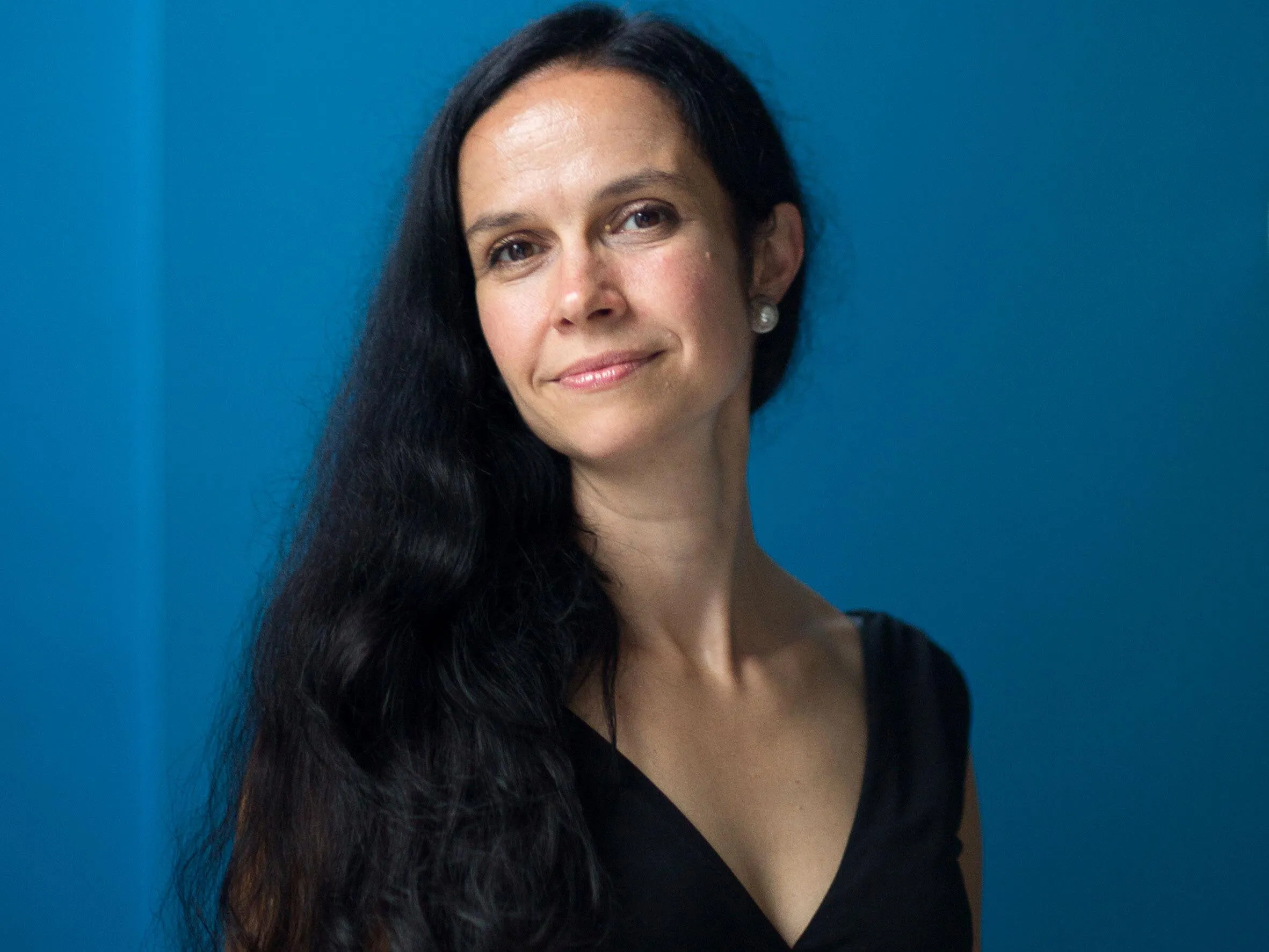 Bio: Muriel Médard is the NEC Professor of Software Science and Engineering in the School of Engineering at MIT and a Professor in the Electrical Engineering and Computer Science (EECS) Department at MIT. She leads the Network Coding and Reliable Communications Group in the Research Laboratory for Electronics at MIT and Chief Scientist for Steinwurf, which she has co-founded. She obtained three Bachelors degrees, as well as her M.S. and Sc.D, all from MIT. Muriel is a Member of the US National Academy of Engineering (elected 2020), a Member of the German National Academy of Sciences Leopoldina (elected 2022), a Fellow of the US National Academy of Inventors (elected 2018), American Academy of Arts and Sciences (elected 2021), and a Fellow of the Institute of Electrical and Electronics Engineers (elected 2008). She holds Honorary Doctorates from the Technical University of Munich (2020) and from The University of Aalborg (2022).
Bio: Muriel Médard is the NEC Professor of Software Science and Engineering in the School of Engineering at MIT and a Professor in the Electrical Engineering and Computer Science (EECS) Department at MIT. She leads the Network Coding and Reliable Communications Group in the Research Laboratory for Electronics at MIT and Chief Scientist for Steinwurf, which she has co-founded. She obtained three Bachelors degrees, as well as her M.S. and Sc.D, all from MIT. Muriel is a Member of the US National Academy of Engineering (elected 2020), a Member of the German National Academy of Sciences Leopoldina (elected 2022), a Fellow of the US National Academy of Inventors (elected 2018), American Academy of Arts and Sciences (elected 2021), and a Fellow of the Institute of Electrical and Electronics Engineers (elected 2008). She holds Honorary Doctorates from the Technical University of Munich (2020) and from The University of Aalborg (2022).
Muriel was awarded the 2022 IEEE Kobayashi Computers and Communications Award. She received the 2017 IEEE Communications Society Edwin Howard Armstrong Achievement Award and the 2016 IEEE Vehicular Technology James Evans Avant Garde Award. Muriel was co-winner of the MIT 2004 Harold E. Egerton Faculty Achievement Award and was named a Gilbreth Lecturer by the US National Academy of Engineering in 2007. She received the 2019 Best Paper award for IEEE Transactions on Network Science and Engineering, the 2018 ACM SIGCOMM Test of Time Paper Award, the 2009 IEEE Communication Society and Information Theory Society Joint Paper Award, the 2009 William R. Bennett Prize in the Field of Communications Networking, the 2002 IEEE Leon K. Kirchmayer Prize Paper Award, as well as nine conference paper awards. Most of her prize papers are co-authored with students from her group.
Muriel currently serves as the Editor-in-Chief of the IEEE Transactions on Information Theory and served previously as Editor in Chief of the IEEE Journal on Selected Areas in Communications. She was elected president of the IEEE Information Theory Society in 2012, and serves on its board of governors, having previously served for eleven years. Muriel has supervised over 40 master students, over 20 doctoral students and over 25 postdoctoral fellows. She received the inaugural MIT Postdoctoral Association Mentoring Award in 2022, the inaugural MIT EECS Graduate Student Association Mentor Award, voted by the students in 2013. She set up the Women in the Information Theory Society (WithITS) and Information Theory Society Mentoring Program, for which she was recognized with the 2017 Aaron Wyner Distinguished Service Award.
Muriel has over sixty US and international patents awarded, the vast majority of which have been licensed or acquired. For technology transfer, she has co-founded CodeOn, for intellectual property licensing. and Steinwurf, for reliable and low-latency networking. She serves on the Nokia Bell Labs Technical Advisory Board.
KEYNOTE 5: ED TIEDEMANN
Title: From 5 to 6: The Visions of These Generations of Mobile Communications, the Technologies, Standards, and Realities
Abstract: In June 2018, Release 15—the first release of the standards for 5G communications—was completed by 3GPP. Sometime in the late 2020’s, the first release of the standards for 6G communications is expected to be completed. The 5G standard began with three pillars of capabilities: eMBB, mMTC (Massive Machine Type Communications), and URLLC. (Ultra Reliable Low Latency Communications), but has involved to support many user communities, including transportation, satellite, broadcast, and a wide variety of IoT. 3GPP continues to address enhancements to these areas, and, as part of 5G Advanced (Release 18 and beyond), has been addressing AI, integrated sensing and communications, full duplex, ambient IoT, and network energy savings. With 5G, there has been a major effort in the O-RAN Alliance to develop standards for the fronthaul between the Radio Unit (RU) and the Distributed Unit (DU), and for the Near-Real-Time RAN Intelligent Controller (RIC). Platforms have evolved significantly, with user devices now having considerable processing capabilities including Neural Processing Units (NPUs) for AI, and the network having general purpose processing at the edge (Edge Cloud) and the core becoming cloud based. With 3GPP likely to have a workshop in early 2025 to kick off serious 6G standardization, it is worthwhile examining the status of 5G and the industry, and in its early days, the directions being charted for 6G.
Since the first launches of 5G about 5 years ago, there has been a continual growth in 5G deployments and usage, mostly focused on Enhanced Mobile Broadband (eMBB). The 5G standard began with three pillars of capabilities: eMBB, mMTC (Massive Machine Type Communications), and URLLC. (Ultra Reliable Low Latency Communications), but has involved to support many user communities, including the very extensive and diffuse IoT, transportation, satellite, and broadcast. While deployments in many of these communities is still in their nascent stages, the attention of the worldwide research community has been shifting to 6G. With 3GPP likely to have a 5G workshop in 2025 to kick off serious 6G standardization, it is worthwhile examining the status of 5G and the industry, and in its early days, the directions being charted for 6G. It doing such, it is worthwhile to examine some of the key aspects that will lead to a successful 6G, such the further development and deployment of 5G.
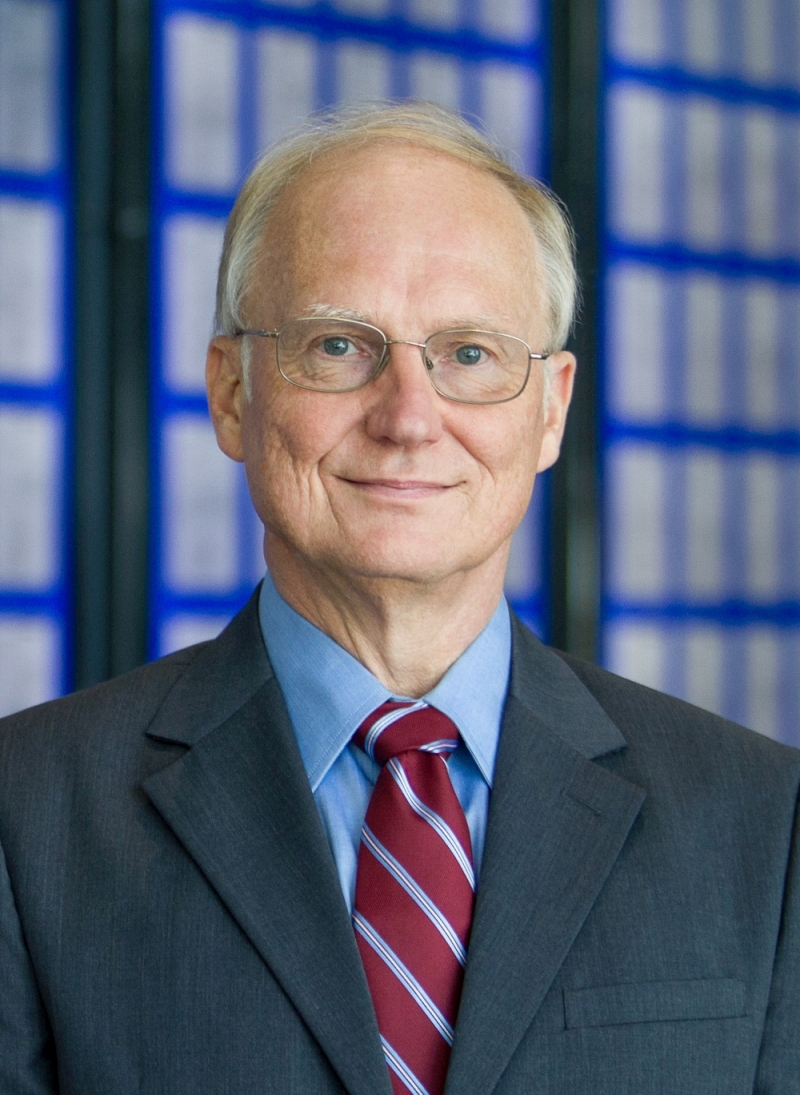 Bio: Edward G. Tiedemann, Jr. is an IEEE Fellow, a Qualcomm Fellow, and a Senior Vice President of Engineering of Qualcomm Technologies, Inc. He leads Qualcomm’s worldwide standardization and industry organization activities. Dr. Tiedemann was instrumental in the design and development of the TIA/EIA/IS-95 CDMA system, also called cdmaOne™. He has been active in every G since then. Dr. Tiedemann has almost 300 granted US patents and has participated in many papers, conference lectures, and industry panels. He is interested in multiple topics in communications including 5G and beyond, IoT, and V2x.
Bio: Edward G. Tiedemann, Jr. is an IEEE Fellow, a Qualcomm Fellow, and a Senior Vice President of Engineering of Qualcomm Technologies, Inc. He leads Qualcomm’s worldwide standardization and industry organization activities. Dr. Tiedemann was instrumental in the design and development of the TIA/EIA/IS-95 CDMA system, also called cdmaOne™. He has been active in every G since then. Dr. Tiedemann has almost 300 granted US patents and has participated in many papers, conference lectures, and industry panels. He is interested in multiple topics in communications including 5G and beyond, IoT, and V2x.
Tiedemann holds the Ph.D. degree from MIT where he worked in the areas of queueing theory and communications networks. He holds the Master of Science degree from Purdue University and the Bachelor of Science degree from Virginia Polytechnic Institute and State University (Va Tech).
Tiedemann currently is a member of the Next G Alliance Research Council, the Purdue University Semiconductor Degrees Leadership Board, the Advisory Board of the Purdue University School of Electrical and Computer Engineering, the Hong Kong University of Science and Technology (HKUST) School of Engineering Advisory Committee, and the International Advisory Panel of the Singapore Future Communications Research & Development Programme. He also serves as the IEEE Communications Society as Director, Standards Development. Dr. Tiedemann is past chairman of the Advisory Board of the College of Engineering at Virginia Polytechnic Institute and State University (Va Tech) and was General Chair of IEEE GLOBECOM 2015. He is also a member of the Board of Advisors of the Peabody Essex Museum and a member of the Board of Trustees of the Concord Museum. He has received numerous recognitions, including the Robert M. Walp Industry Humanitarian Award from the IEEE Communications Society.
THURSDAY, DEC 7, 10:30 - 12:30 / LOCATION: HALL 8(A,B)
KEYNOTE 6: HARALD HAAS
Title: Recent Advances in Light-Based Wireless Networking
Abstract: Key performance indicators (KPIs) for 6G networks encompass security, net-zero energy goals, extreme network densification, user data rates exceeding 10 Gbps, and aggregate data rates up to 1 Tbps. Over three decades of research and groundbreaking advancements in optical device technologies and optics have enabled the optical spectrum to not only power our fibre networks, but also to pave the way for next-generation wireless networks that meet these ambitious KPIs. This talk will examine the challenges inherent to optical-to-electrical (OE) conversion efficiencies, as well as the system trade-offs influenced by the distinct properties of light such as the conservation of étendue. Utilising these insights, and capitalising on the unique opportunities presented by the light spectrum, we investigate the potential of optical wireless systems to achieve aggregate data rates of up to 1 Tbps for indoor mobile networks. We will discuss future directions based on opportunities offered by, for example, orbital angular momentum (OAM) transmission systems in conjunction with metalenses. We further demonstrate how photovoltaic cells can perform dual functions: acting as energy harvesters while also serving as detectors for optical wireless signals at Gbps speeds, thereby establishing a foundation for net-zero wireless networks. Lastly, we offer an overview of the recently ratified IEEE 802.11bb LiFi standard, addressing both the current challenges and the prospective pathways in the evolving 6G ecosystem.
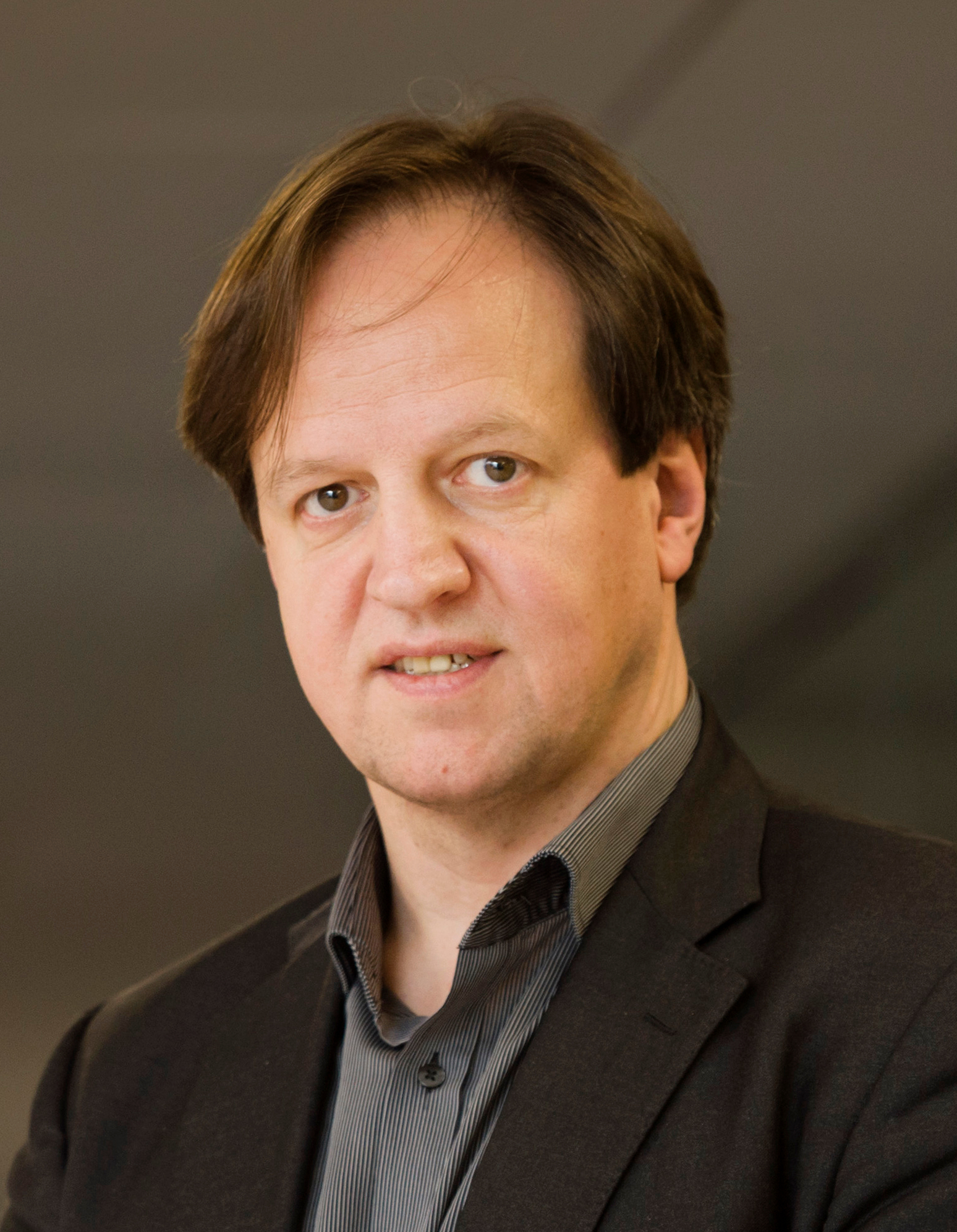 Bio: Harald Haas received his Ph.D. degree from The University of Edinburgh in 2001. He is a Distinguished Professor of Mobile Communications at the University of Strathclyde/Glasgow, Visiting Professor at the University of Edinburgh, and the Director of the LiFi Research and Development Centre (LRDC). Prof Haas founded pureLiFi Ltd., where holds the position of Chief Scientific Officer (CSO). His most recent research interests are in combining physics and communication theory towards designing secure, high-speed and net-zero wireless multi-user access networks including distributed x-haul networks using new spectrum, in particular ultraviolet, visible, and infrared light. He has co-authored more than 650 conference and journal papers and holds more than 45 patents. He has been listed as highly cited researcher by Clarivate/Web of Science since 2017. Prof. Haas has delivered two TED talks which have been watched online more than 5.5 million times. In 2016, he was the recipient of the Outstanding Achievement Award from the International Solid State Lighting Alliance. In 2017 he was awarded a Royal Society Wolfson Research Merit Award. In 2019 he received the IEEE Vehicular Society James Evans Avant Garde Award. In 2021, he received the Enginuity The Connect Places Innovation Award. In 2022 he was the recipient of a Humboldt Research Award for his research achievements to date. He is a Fellow of the IEEE, a Fellow of the Royal Academy of Engineering (RAEng), a Fellow of the Royal Society of Edinburgh (RSE), and a Fellow of the Institution of Engineering and Technology (IET).
Bio: Harald Haas received his Ph.D. degree from The University of Edinburgh in 2001. He is a Distinguished Professor of Mobile Communications at the University of Strathclyde/Glasgow, Visiting Professor at the University of Edinburgh, and the Director of the LiFi Research and Development Centre (LRDC). Prof Haas founded pureLiFi Ltd., where holds the position of Chief Scientific Officer (CSO). His most recent research interests are in combining physics and communication theory towards designing secure, high-speed and net-zero wireless multi-user access networks including distributed x-haul networks using new spectrum, in particular ultraviolet, visible, and infrared light. He has co-authored more than 650 conference and journal papers and holds more than 45 patents. He has been listed as highly cited researcher by Clarivate/Web of Science since 2017. Prof. Haas has delivered two TED talks which have been watched online more than 5.5 million times. In 2016, he was the recipient of the Outstanding Achievement Award from the International Solid State Lighting Alliance. In 2017 he was awarded a Royal Society Wolfson Research Merit Award. In 2019 he received the IEEE Vehicular Society James Evans Avant Garde Award. In 2021, he received the Enginuity The Connect Places Innovation Award. In 2022 he was the recipient of a Humboldt Research Award for his research achievements to date. He is a Fellow of the IEEE, a Fellow of the Royal Academy of Engineering (RAEng), a Fellow of the Royal Society of Edinburgh (RSE), and a Fellow of the Institution of Engineering and Technology (IET).
KEYNOTE 7: LI TIAN
Title: 6G Connectivity: Paving Digital Pathways to Rescue the SDGs
Abstract: As the year 2030 draws closer, more than half the time since the introduction of the UN's Sustainable Development Goals (SDGs) in 2015 has elapsed. The challenges in achieving these goals have intensified, with many targets falling significantly short of their intended milestones. In this critical juncture, 6G technology, representing the forefront of digital and ICT innovations, is expected to play a pivotal role to accelerate achieving the SDGs. The 6G vision, released recently by ITU-R, is intrinsically tied to these goals. Beyond merely addressing connectivity and capacity issues, 6G encompasses broader societal ambitions like digital transformation, digital inclusivity, environmental protection, health, and other key aspects of people-oriented public welfare. The philosophy of 6G should not be solely about enhancing performance, while emphasis on energy efficiency, affordability, and security is of equal importance. With technical innovations like intrinsic AI, convergence of networks and computing power, the integration of communication and sensing, etc., 6G is shaping a thriving ecosystem. And with the continuous efforts of all stakeholders, the ecosystem is set to pave the way for an inclusive intelligent society and catalyze the realization of the SDGs.
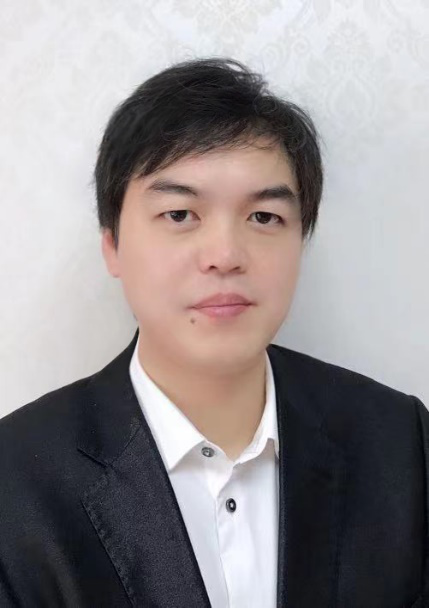 Bio: Li Tian is currently the Head of Standards Strategy Department of ZTE Corporation. He is actively involved in various global standardization organizations including 3GPP, ITU, IEEE, where he served as the rapporteur for several 5G related work items. His research interests are in the field of ICT technology, and his team contributed significantly to advanced technologies like radio access, AI/ML, future networks, video coding, automobile electronics, network security, etc. Dr. Tian received his B.Sc degree in 2009 and Ph.D degree in 2015, both in Tongji University, China. From 2013 to 2014, he was a visiting researcher in University of Bologna, Italy. He is the first author of a book and contributed to multiple book chapters, with over 50 academic papers published and over 100 patents held globally. Li served as the co-chair of IWCMC2020 workshop and keynote chair of WCNC2021, he has also delivered multiple keynotes in various academic and industrial events.
Bio: Li Tian is currently the Head of Standards Strategy Department of ZTE Corporation. He is actively involved in various global standardization organizations including 3GPP, ITU, IEEE, where he served as the rapporteur for several 5G related work items. His research interests are in the field of ICT technology, and his team contributed significantly to advanced technologies like radio access, AI/ML, future networks, video coding, automobile electronics, network security, etc. Dr. Tian received his B.Sc degree in 2009 and Ph.D degree in 2015, both in Tongji University, China. From 2013 to 2014, he was a visiting researcher in University of Bologna, Italy. He is the first author of a book and contributed to multiple book chapters, with over 50 academic papers published and over 100 patents held globally. Li served as the co-chair of IWCMC2020 workshop and keynote chair of WCNC2021, he has also delivered multiple keynotes in various academic and industrial events.



